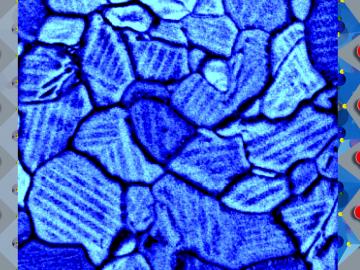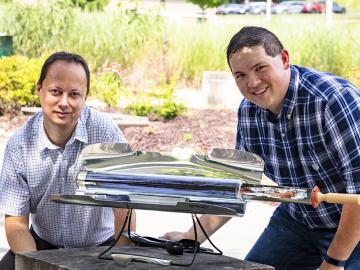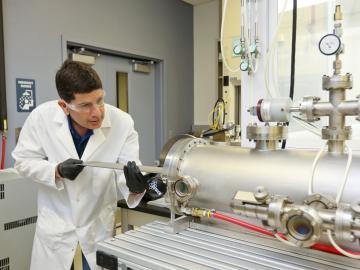
Filter News
Area of Research
- (-) Materials (45)
- Advanced Manufacturing (2)
- Biological Systems (1)
- Biology and Environment (13)
- Clean Energy (32)
- Climate and Environmental Systems (1)
- Computational Biology (1)
- Energy Frontier Research Centers (1)
- Fuel Cycle Science and Technology (1)
- Fusion and Fission (8)
- Isotopes (1)
- Materials for Computing (3)
- National Security (8)
- Neutron Science (20)
- Nuclear Science and Technology (6)
- Nuclear Systems Modeling, Simulation and Validation (1)
- Sensors and Controls (1)
- Supercomputing (24)
News Topics
- 3-D Printing/Advanced Manufacturing (4)
- Advanced Reactors (1)
- Artificial Intelligence (3)
- Bioenergy (3)
- Biology (3)
- Biomedical (2)
- Buildings (1)
- Chemical Sciences (9)
- Composites (1)
- Computer Science (2)
- Coronavirus (1)
- Critical Materials (1)
- Cybersecurity (1)
- Decarbonization (1)
- Energy Storage (11)
- Environment (2)
- Exascale Computing (1)
- Frontier (1)
- Fusion (1)
- Grid (1)
- High-Performance Computing (2)
- Isotopes (2)
- Machine Learning (1)
- Materials (12)
- Materials Science (5)
- Microscopy (3)
- Nanotechnology (5)
- National Security (2)
- Neutron Science (5)
- Nuclear Energy (1)
- Partnerships (4)
- Physics (6)
- Polymers (2)
- Quantum Science (1)
- Security (1)
- Sustainable Energy (1)
- Transformational Challenge Reactor (1)
- Transportation (2)
Media Contacts

Scientists at the Department of Energy’s Oak Ridge National Laboratory used neutrons, isotopes and simulations to “see” the atomic structure of a saturated solution and found evidence supporting one of two competing hypotheses about how ions come


A unique combination of imaging tools and atomic-level simulations has allowed a team led by the Department of Energy’s Oak Ridge National Laboratory to solve a longstanding debate about the properties of a promising material that can harvest energy from light. Th...

Chemists at the Department of Energy’s Oak Ridge National Laboratory have demonstrated a practical, energy-efficient method of capturing carbon dioxide (CO2) directly from air. They report their findings in Nature Energy. If deployed at large scale and coupled to geo...

Scientists at the Department of Energy’s Oak Ridge National Laboratory induced a two-dimensional material to cannibalize itself for atomic “building blocks” from which stable structures formed. The findings, reported in Nature Communications, provide insights that ...


StealthCo, Inc., an Oak Ridge, Tenn.-based firm doing business as Stealth Mark, has exclusively licensed an invisible micro-taggant from the Department of Energy’s Oak Ridge National Laboratory. The anticounterfeiting technology features a novel materials coding system that uses an infrared marker for identification.



The Department of Energy’s Oak Ridge National Laboratory is now producing actinium-227 (Ac-227) to meet projected demand for a highly effective cancer drug through a 10-year contract between the U.S. DOE Isotope Program and Bayer.


